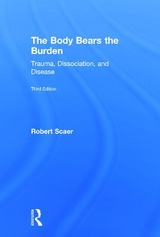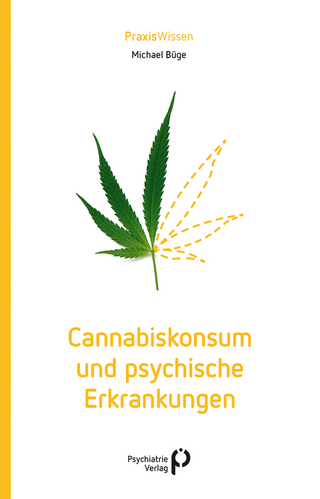
The Body Bears the Burden
Routledge (Verlag)
978-0-7890-3334-5 (ISBN)
- Titel erscheint in neuer Auflage
- Artikel merken
New edition provides updated concepts and ideas in simplified medical language The Body Bears the Burden: Trauma, Dissociation, and Disease, Second Edition is the update of the classic book that explains the reasons behind some of the most common symptoms and conditions that previously defied a medical explanation. Respected author, Robert C. Scaer, MD, has diligently simplified the complex medical language that was used in the first edition to make it easier for lay readers and patients to understandall without sacrificing accuracy. This valuable text presents a new theory of the neurophysiology of traumatic stress and dissociation and includes several updated chapters and new concepts that have been developed since the previous edition. Human response is quite different than other animals’ response to trauma. This response is discussed in detail in The Body Bears the Burden: Trauma, Dissociation, and Disease, Second Edition, including the fight/flight/freeze cycle and how the human response causes abnormal regulation of many body systems which then may lead to many illnesses or conditions. The emotional and physical experiences of patients with Posttraumatic Stress Disorder and other syndromes such as whiplash are comprehensively examined. Patients and lay readers alike who have been told it is all in your head may well feel like this book was specifically written about them and the unexplained complex symptoms they experience. Topics in The Body Bears the Burden: Trauma, Dissociation, and Disease, Second Edition include:
the role of the fight/flight/freeze response in traumatic stress
the neurophysiology of traumatic stress and dissociation
the Whiplash Syndrome as a model for procedural memory in trauma
analysis of traumatic repetition
the theoretical concept of somatic dissociation
the varied syndromes and medical diseases of trauma and dissociation
a theoretical analysis or therapy for trauma
illustrative case histories of trauma and the body
and more!
The Body Bears the Burden: Trauma, Dissociation, and Disease, Second Edition is valuable information for physicians, psychologists, psychotherapists, social workers, physical, occupational, and speech therapists, nurses, and those lay people looking to better understand the physiologic rationale for a large number of perplexing chronic medical diseases and syndromes.
Foreword (Bessel A. van der Kolk)
Preface
Acknowledgments
Chapter 1. Concepts of Traumatization: The Role of Boundaries
The Concept of Boundaries
The Role of Boundaries in Trauma
Boundaries and Childhood
Conclusion
Chapter 2. Trauma, Instinct, and the Brain: The Fight/Flight/Freeze Response
The Neurophysiology of Trauma
Brain Responses to Stress
Fighting, Fleeing, or Freezing
Conclusion
Chapter 3. The Whiplash Syndrome I: Symptoms in Search of a Meaning
The History of Whiplash
The Clinical Syndrome
Physical Forces and Structural Injury
The Pathophysiology of Whiplash
Conclusion
Chapter 4. The Whiplash Syndrome II: A Model of the Brain in Trauma
Memory Mechanisms in Trauma
Somatic Responses to Stress
The Meaning of Speed
The Physiology of Trauma
Conclusion
Chapter 5. Trauma and Brain Plasticity
The History of Post-Traumatic Stress Disorder in Psychiatry
The Developing Brain
The Development of Character
Brain Plasticity in Trauma
Objective Measures of Brain Change in Trauma
The Permanence of Post-Traumatic Stress Disorder
Conclusion
Chapter 6. Somatic Dissociation
Examples of Dissociation
Memory in Dissociation
Cognitive and Emotional Features
Dissociative Physical Symptoms
Conversion Hysteria and Dissociation
The Autonomic Nervous System in Post-Traumatic Stress Disorder
The Concept of Boundaries
The Spectrum of Somatic Dissociation
The Dissociative Capsule
Conclusion
Chapter 7. Diseases of Traumatic Stress
The Pathophysiology of Stress
Stress versus Trauma
The Hypothalamic/Pituitary/Adrenal Axis
Stress, Post-Traumatic Stress Disorder, and Immune Function
The Diseases of Trauma
Morbidity and Mortality
Conclusion
Chapter 8. Trauma Reenactment
Introduction
The Roots of Reenactment
Clinical Features
Gender Differences
Anniversary Syndrome
Reenactment Through Risk Taking
Conclusion
Chapter 9. Sources of Trauma
The Definition of Traumatic Stress
Exposure to Combat
Child Abuse
Societal Trauma
Medical Trauma
The Role of Past Trauma
Awareness During Anesthesia
Pediatric Medical Trauma
Childhood Medical Trauma
Conclusion
Chapter 10. Trauma Therapy: Essential Ingredients
Cognitive/Verbal Therapy
Exposure and Desensitization Techniques
Somatically Based Therapies
Eye Movement Desensitization and Reprocessing
Somatic Experiencing
Energy Psychology
The Search for the Essential Ingredient
Pharmacotherapy of Post-Traumatic Stress Disorder
Conclusion
Chapter 11. Case Histories: The Somatic Spectrum of Trauma
A State of Vulnerability
Somatic Representations of Prior Trauma
Medical and Forensic Trauma
Multiple Chemical Sensitivities
The Mysterious Piriformis
Disorders of Speech in Trauma
Spasmodic Torticollis: An Aberration of the Orienting Reflex
Dissociation and Reflex Sympathetic Dystrophy
Comments
Epilogue
Notes
Index
| Erscheint lt. Verlag | 4.10.2007 |
|---|---|
| Verlagsort | New York |
| Sprache | englisch |
| Gewicht | 622 g |
| Themenwelt | Medizin / Pharmazie ► Medizinische Fachgebiete ► Psychiatrie / Psychotherapie |
| ISBN-10 | 0-7890-3334-8 / 0789033348 |
| ISBN-13 | 978-0-7890-3334-5 / 9780789033345 |
| Zustand | Neuware |
| Informationen gemäß Produktsicherheitsverordnung (GPSR) | |
| Haben Sie eine Frage zum Produkt? |
aus dem Bereich



